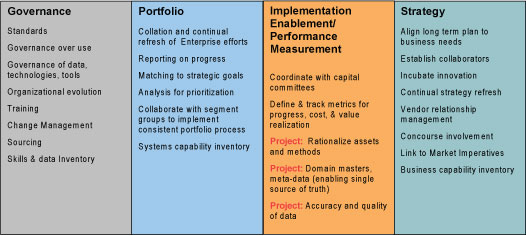Developing A Lifecycle Management Plan In Healthcare
By Ron Schrimp
Healthcare is moving at the speed of thought and this includes the plan operations, defining the right products in today’s economy for the consumer, and the technology to support the rapid changes needed to remain competitive. In this article I want to share with you what I believe to be the best Technology lifecycle management (TLCM) plan. To remain valuable to your operational business units you must ensure the technology can keep pace with rapid changes, as well as ensuring your systems have a lifecycle just like products, food and other critical items in everyday life. The difference is that most organization develop products to sell in the market and they do not have the appropriate lifecycle to determine when you should invent, deliver, manage, peak, & sunset.
We recognized this problem and decided to invest in putting in place a TLCM program. We began to put together a map to outline our key areas for TLCM. As part of the development of the map we invited key members from across the company to define and execute on our TLCM plan. Figure 1 show the high level results of our work and the foundation from which we began execution.

Figure 1
The key is to develop a multi-phased approach based on proven, repeatable processes. This enabled our technology organizations to extend the value of their IT infrastructure to support the evolutionary needs of the business and the strategy they needed to deliver on their commitments.
When developing your TLCM, there are key areas to consider as most organizations should be developing their plan to drive higher availability of systems, reduce redundancy, cost containment on both hardware and software and finally drive consistent standards and best practices for managing technology. Below are the 5 steps to developing your lifecycle management plan that should help when developing your plan, or ifyou are planning to update your existing one.
- Assess And Identify Your Organization In The Following Areas:
- End of life
- Warranty issues
- Running too many different types of hardware/platforms
- Development of your “as-is” blueprint for your technology platforms
- Creation of a service and component catalog
- Technology Acquisition
- Phased purchase/implementation of servers
- Server consolidation frees up your operating and maintenance budgets so you’re able to buy the latest technology.
- Integrate Your Technologies To Manage Cost And Upgrades
- Implement production server consolidation and containment – Contain server sprawl by running software applications in virtual machines.
- Provide advanced business continuity and deliver applications in virtual machine environments.
- Develop standards for software test and development. Consolidate disparate development, testing and staging environments into the minimum necessary to achieve appropriate testing results.
- Simplify your infrastructure. Centralize command and control and give users the flexibility to manage their environments within the standards established by the technology office.
- Technology Refresh
- Evaluate and assess each of the platforms based on the business drivers again on an annual basis.
- Monitor and manage new technologies and the impact they could have to the existing technology plan and standards. Put in place a Review Board with a process to evaluate new technology requests, for example, we are implementing TCOEs to be the subject matter expert and to evaluate and make recommendations to our architecture review board.
- Asset Disposal And Disposition
- Migration of data or systems
- Decommission:
- Scrubbing disk drives
- Updating warehousing platforms and performance needs.
- De-installation – Keep only those operating assets that are truly being used and not simply sitting on a server for “just in case” purposes.
A technology lifecycle management plan is a very important component of your overall enterprise architecture strategy and should have the appropriate staff and executive support to implement. Using these techniques should help you leapfrog your TLCM and offer a good case to manage IT costs more efficiently. In my next article I will discuss the importance of developing a high performance Enterprise Architecture program that will enable you to implement a key framework and standards.
About the Author
Ron Schrimp has more than 23 years of experience designing and developing Enterprise Information solutions. He is Vice President and Chief Enterprise Architect for Ingenix, a United Health Group company.